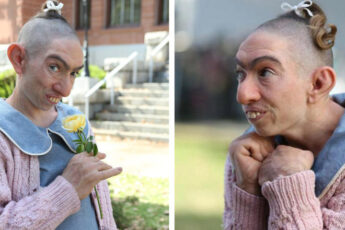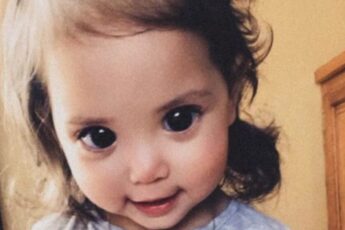It can be a thankless profession to save animals. There aren’t many people that do it, but when they do, they give it their all.
This blue penguin was freed from the plastic netting that was entangling it.
He was then delivered to the Kaikoura Wildlife Hospital in Kaikoura, New Zealand, where a head wound and extreme tiredness were attended to.

They assisted in his release back into the water after he had properly recovered.
More difficult than they anticipated.
It appears that the blue penguin and his keepers grew close. He moved a short distance before turning to face the guy who looked after him.
He then turned to face the ocean once more before moving closer to it. He turned to face the waters, but not before giving his caretaker one more glance.

He was aware that this was his last act.
He would never see her again. But as soon as the ocean touched his feet, he realized that this was where he belonged. He then sprinted into the water.
He didn’t care if the waves appeared to be stopping him. He made a push through the waves and swam to his house.

In addition, blue penguins are accustomed to the choppy waves along New Zealand’s coast.
Little penguins
Little or fairy penguins are other names for blue penguins. They are the smallest species of penguin.
Their eyes might be silver, blue, grey, or hazel, and their beaks are all black.
The flipper undersides, torso, chin, and throat are initially white but can eventually turn gray or brown.

Additionally, it has an indigo-blue hue on its top, neck, body, and outer portions of its flippers.
They are a unique breed of bird.
Blue penguins are active throughout the day and at night. They have their own distinct call, and they are very noisy.
Due to natural predators and commercial fishing, their species is on the verge of extinction. They also bear the brunt of the effects of oil spills.

It’s fortunate that this young blue penguin was saved at that particular moment. He most likely had a family that looked to him for food.
They do not migrate, and they prefer to remain near their colony. Therefore, when one goes missing, the colony is probably in a tizzy.
This blue penguin was extremely lucky.
It was fortunate that Kaikoura Wildlife Rescue was entrusted with taking care of it.

Kaikoura Wildlife Rescue, which was established in 2017 by wildlife biologist Sabrina Luecht, has assisted in the rehabilitation of thousands of birds, particularly seabirds including blue penguins, yellow-eyed penguins, shags, gulls, petrels, and shearwaters.
She claimed that dealing with the animals’ wounds and deaths is the most difficult aspect of wildlife rehabilitation.

Instead of suffering from natural injuries, many individuals enter rehab, according to Sabrina. “Despite your best efforts and long hours of work, some patients cannot be saved, which is always upsetting. Saving native birds is one of the best components of wildlife rehabilitation. It everything becomes worthwhile when birds are returned to the wild.
Please SHARING this with your loved ones.






